Suspension systems are often one of the most underappreciated aspects of a vehicle’s engineering, yet they play a central role in defining how a car feels and performs on the road. Most drivers focus on power, styling, or infotainment features when shopping for a new vehicle, but what ultimately shapes your daily driving experience is the suspension.
It’s the hidden framework that dictates how much you feel the road, how composed your vehicle stays in a corner, and whether a drive leaves you refreshed or fatigued. It’s where luxury can either flourish or fall flat—and where ruggedness can feel either rewarding or brutal.
Modern automotive suspensions span a wide spectrum, from ultra-refined systems designed to glide over imperfections with surgical smoothness to rugged, utilitarian setups engineered to withstand harsh terrain but often at the expense of daily comfort.
Automakers are constantly walking a tightrope between handling performance and ride quality, tuning suspensions to match each vehicle’s mission. For luxury sedans and premium SUVs, this usually means embracing air suspension, adaptive damping, and predictive technologies that smooth every dip, crack, and ripple in the pavement.
For off-roaders and performance vehicles, it often means embracing stiffness, travel, and control, sometimes resulting in a ride that can feel like punishment on city streets. In this article, we’ll dive into two extremes of that spectrum. On one end, we’ll explore five factory suspension systems that are masterclasses in comfort, designed not just to reduce road harshness but to erase it.
These vehicles have been engineered with ride quality as a top priority, incorporating high-tech systems that deliver plush, graceful movement across all surfaces. On the other end, we’ll look at five suspension setups that, while effective in their own contexts, can be downright jarring in everyday driving.
These systems tend to prioritize rugged capability or sharp handling over occupant comfort, and while they have their place, they’re not always ideal for commuting or long-distance travel. It’s important to understand that a “bad” suspension isn’t always the result of poor engineering. In many cases, harshness is the tradeoff for excellence in other performance areas.
For instance, a rock-crawling off-road truck or a performance-tuned crossover might have stiff shocks and limited travel to enhance stability and control, but that same rigidity makes them tiring to drive on rough pavement or during long road trips.
Similarly, comfort-focused luxury vehicles may sacrifice responsiveness and feedback in favor of ride smoothness, appealing to a different kind of driver. Each system is a reflection of priorities, and understanding those priorities helps explain why some suspensions coddle you while others shake you awake.
Whether you’re a driving enthusiast looking for precise control or someone who values serenity behind the wheel, knowing which vehicles excel or falter in suspension tuning can help shape your next purchase—or simply help you better appreciate the engineering underneath your current ride. Let’s begin by looking at the vehicles that offer ride comfort so sublime, it can feel like you’re floating on air.
ALSO READ: 12 Compact Cars With Front Seats Comfortable for Tall Drivers and Roomy Leg Space
5 Factory Suspensions Tuned for Comfort
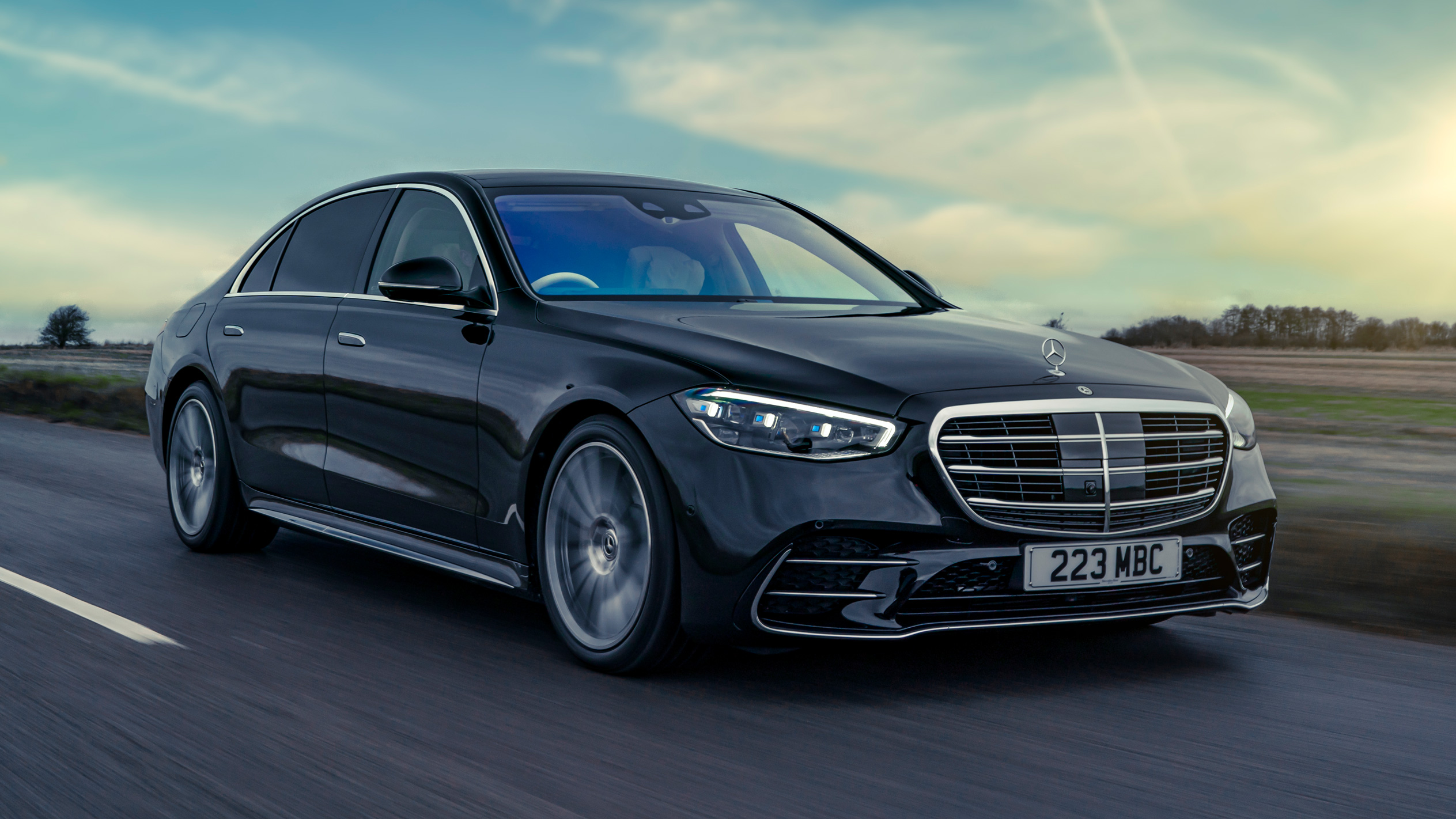
1. Mercedes-Benz S-Class (AIRMATIC and E-Active Body Control)
When discussing suspension systems tuned for pure comfort, the Mercedes-Benz S-Class is often the first name that comes to mind—and with good reason. Mercedes has invested decades of research and development into perfecting its suspension technologies, making the S-Class a symbol of road-going serenity.
At the heart of this comfort-first engineering is the AIRMATIC air suspension system, which replaces traditional steel springs with adjustable air chambers that adapt to road conditions in real-time. It doesn’t just respond to changes in terrain—it anticipates them, maintaining a perfect equilibrium between ride softness and composure. Every imperfection, from potholes to uneven pavement, is softened into near invisibility, creating a glide-like effect that few vehicles can replicate.
The real magic, however, is in the optional E-Active Body Control system, which elevates the experience into an entirely different stratosphere. This state-of-the-art system uses a combination of road-scanning cameras, hydraulic actuators, and predictive algorithms to adjust suspension settings for each wheel before the car even reaches an imperfection.
Not only does it neutralize bumps before they impact the cabin, but it also actively counters body roll during turns and squat during acceleration, allowing the vehicle to remain astonishingly level at all times. This level of dynamic comfort is what makes the S-Class feel more like a rolling sanctuary than a car—it isolates occupants from the mechanical processes of driving while still maintaining a strong connection to the road.
Passengers, especially those in the rear, are the true beneficiaries of this remarkable suspension setup. The S-Class has become the vehicle of choice for heads of state, executives, and celebrities precisely because of its ability to pamper its occupants regardless of road conditions or speed.
Whether it’s gliding silently down the autobahn or inching through a cobblestone-lined street, the S-Class makes every journey feel like a chauffeured ride in a high-end private suite. It’s this complete dedication to smoothness and refinement that places it at the pinnacle of suspension engineering and earns it a spot on any list of comfort-oriented suspensions.
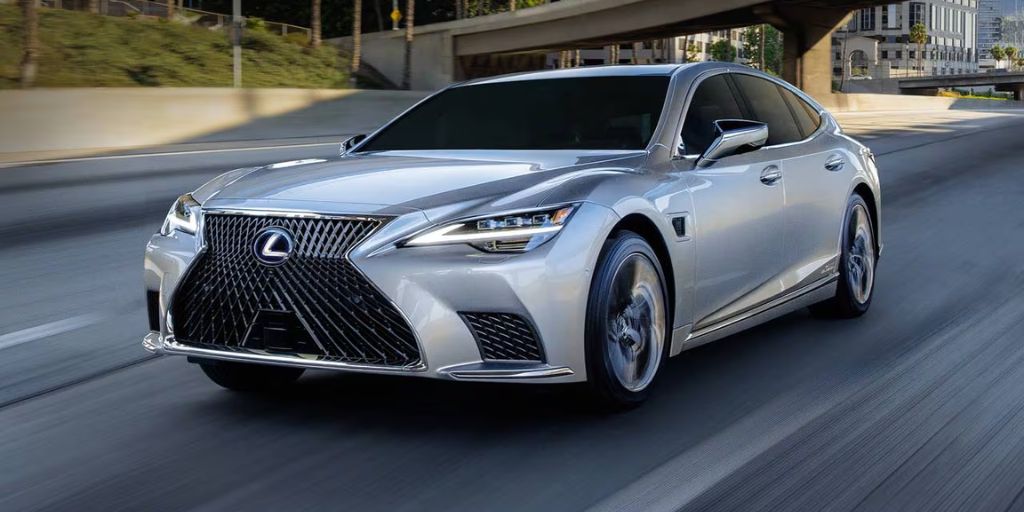
2. Lexus LS (Adaptive Variable Suspension)
The Lexus LS, Toyota’s flagship luxury sedan, is another marvel of suspension tuning focused on providing effortless comfort for its occupants. Central to this experience is the Adaptive Variable Suspension (AVS), which continuously adjusts the damping force of each shock absorber based on real-time feedback from sensors located throughout the vehicle.
This results in an exceptionally smooth ride that constantly adapts to both the driver’s input and road conditions. Whether you’re navigating through city traffic, cruising at highway speeds, or crossing expansion joints, the LS’s suspension is always working in the background to deliver balance and ride harmony.
What makes the AVS system particularly effective is how it seamlessly blends isolation with road awareness. The system doesn’t completely erase feedback from the surface—it filters it intelligently, allowing the driver to feel grounded while sparing passengers from jarring vibrations or sudden jolts.
In “Comfort” mode, the suspension becomes more compliant, soaking up even the harshest surfaces with a featherlight touch. For those who enjoy spirited driving, switching to “Sport” or “Sport+” tightens up the chassis without compromising comfort too drastically, giving the LS a dual nature: refined cruiser and poised executive express.
Beyond the tech, the cabin design further enhances the perception of comfort. Lexus pairs the LS’s compliant suspension with one of the quietest and most well-insulated interiors in the segment. From active noise cancellation to soft-closing doors and ultra-soft leather seats, the entire experience is designed to cocoon passengers in peace.
This harmony between mechanical engineering and interior craftsmanship is what sets the LS apart—it’s not just a comfortable car to ride in, it’s a statement about how refined a ride can truly be when technology and design work in concert.
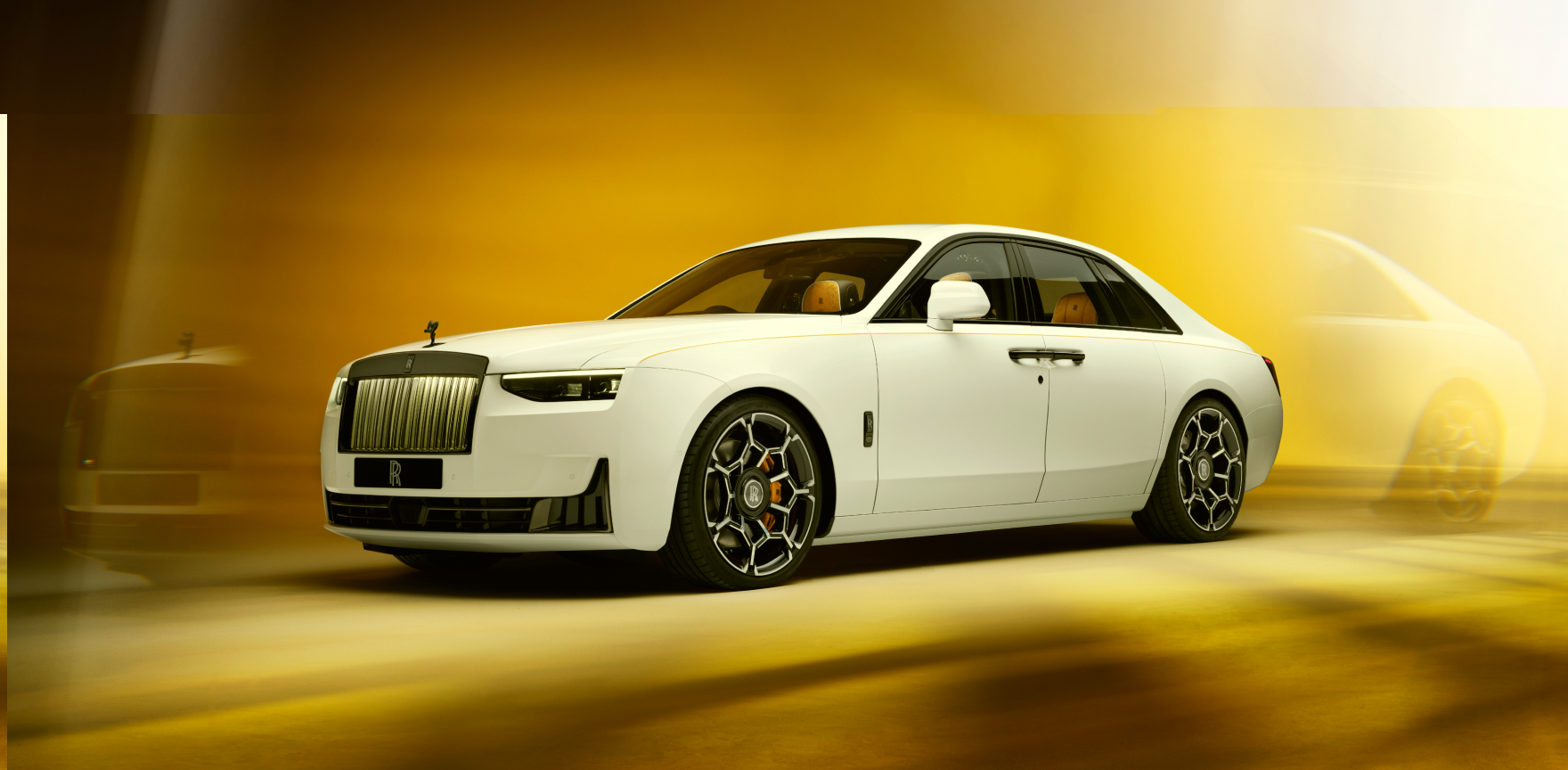
3. Rolls-Royce Ghost (Planar Suspension System)
If comfort were measured in sheer opulence, then the Rolls-Royce Ghost would rank in a class entirely of its own. It’s not just a luxury car—it’s a near-silent vessel designed to glide across the Earth’s imperfections without acknowledging them.
The engineering marvel that allows for this is the Planar Suspension System, a Rolls-Royce-exclusive setup that incorporates an upper wishbone damper, satellite-aided road scanning, and high-capacity air springs. It doesn’t merely respond to the road—it anticipates it. A stereo camera system continuously analyzes the path ahead, adjusting damping and suspension tension milliseconds before the wheels encounter a change in surface.
The goal of the Planar system is simple but incredibly difficult to achieve: to make occupants feel as if they are traveling on a perfectly smooth plane at all times. And it succeeds. Unlike most suspension systems that attempt to filter or absorb road irregularities, the Ghost’s setup prevents those irregularities from ever disturbing the cabin.
Combined with Rolls-Royce’s meticulous attention to NVH (noise, vibration, harshness), the result is a ride so composed that even passengers reading a newspaper will feel as though they’re sitting in a stationary lounge, not a moving vehicle.
What makes the Ghost’s suspension even more impressive is its uncanny ability to balance this comfort with effortless control. It doesn’t float or wallow like an old-school luxury barge—instead, it feels purposeful and grounded, with steering that remains precise and predictable.
This is the magic of modern Rolls-Royce engineering: the vehicle disappears beneath you, leaving only the sensation of effortless motion and supreme tranquility. For those who consider the rear seat their primary domain, there’s perhaps no better suspension in the world.
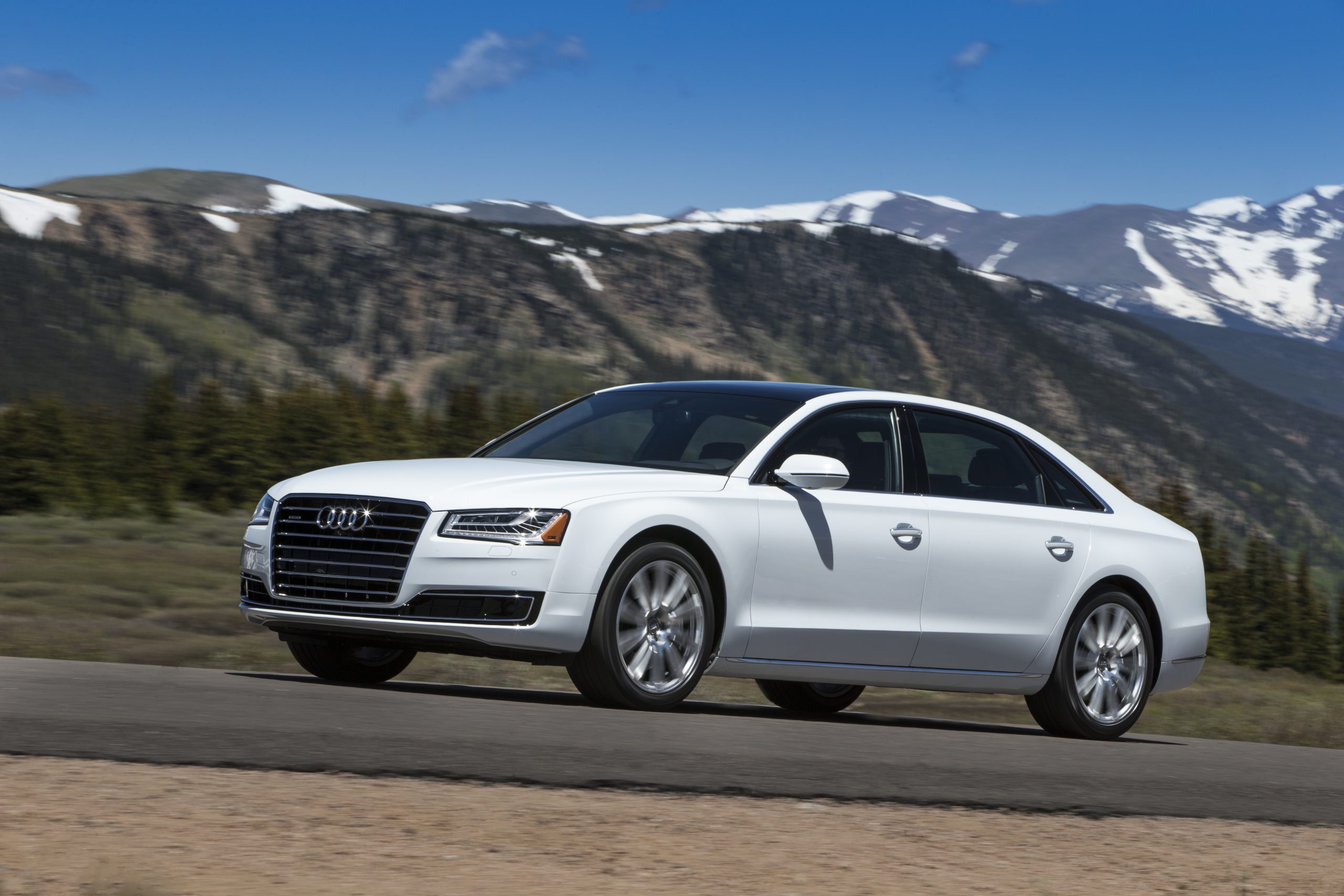
4. Audi A8 (Predictive Active Suspension)
In the world of understated luxury, the Audi A8 stands out for its blend of subtlety and cutting-edge engineering. One of its crown jewels is the Predictive Active Suspension, a futuristic system that reads the road surface ahead using a front-facing camera and adjusts the suspension preemptively at each corner.
This system operates hundreds of times per second, using electric actuators to lift or lower individual wheels before they encounter a bump, dip, or other irregularity. The result is a ride that feels uncannily smooth, as though the car is gliding above the road rather than driving on it.
But the A8’s comfort credentials go beyond simply eliminating bumps. The Predictive Active Suspension also provides active body control, meaning it can counteract roll, pitch, and dive in real time. For example, in sharp corners, the system subtly leans the car inward to reduce perceived g-forces, much like a motorcycle banking into a turn.
During hard braking or acceleration, the car remains level and composed. These active dynamics make the A8 feel composed and confident while also delivering a cosseting experience for passengers, especially in the back, where legroom, massaging seats, and acoustic refinement come together in luxurious synergy.
Audi’s approach is rooted in high-tech sophistication rather than ostentatious flair. The cabin, with its minimalist yet plush design, reinforces this ethos. Every component, from the leather-trimmed seats to the ambient lighting and dual-pane windows, works in tandem with the suspension to create a serene, isolated environment.
The A8 may not boast the bombast of its competitors, but its suspension sophistication ensures it punches far above its weight in terms of ride quality and technological excellence.
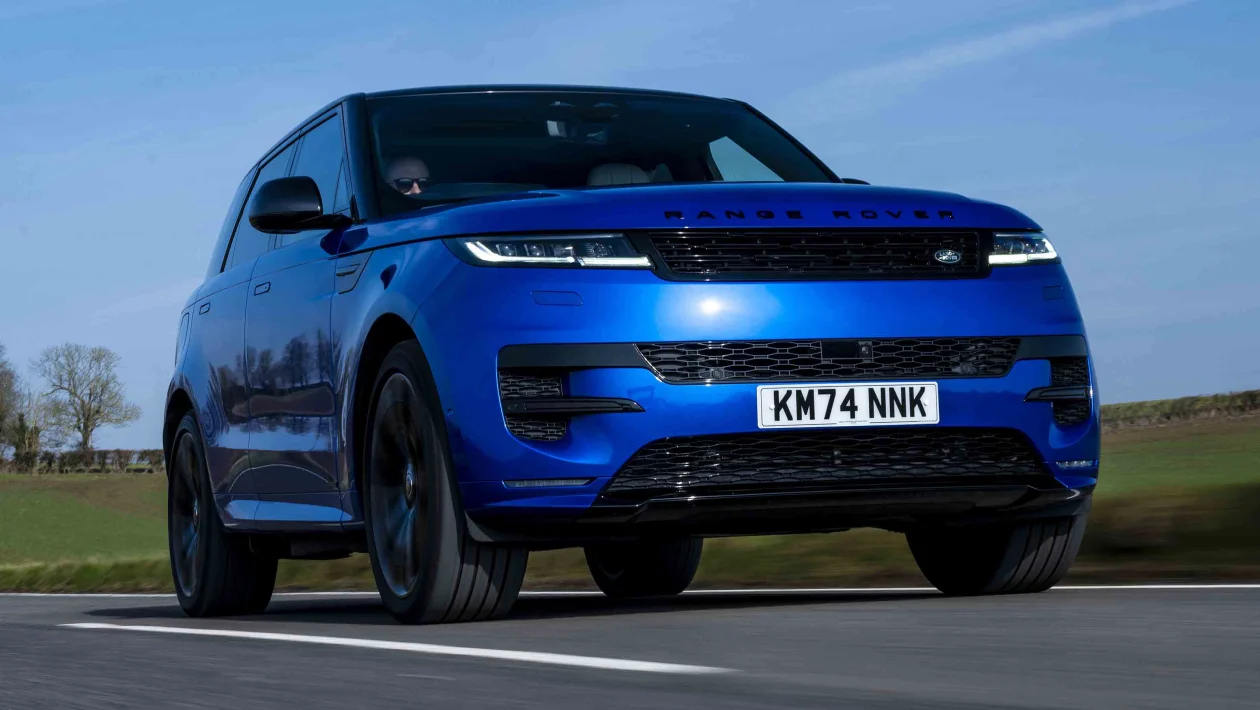
5. Range Rover (Electronic Air Suspension)
The Range Rover has always walked the line between rugged terrain-tamer and high-luxury cruiser, and nowhere is that dual personality more evident than in its electronic air suspension system. Designed for adaptability and comfort across varying surfaces, this setup allows the Range Rover to literally rise to the occasion—or lower itself for easier ingress—depending on conditions.
Using air-filled chambers and electronically controlled dampers, the suspension can automatically adjust to road conditions and driving styles, delivering exceptional smoothness whether you’re off-roading on uneven ground or cruising through a metropolitan boulevard.
On paved roads, the air suspension shines brightest. The vehicle glides over imperfections with grace, giving the driver and passengers a commanding, elevated view without any of the associated jostling or vibration that many SUVs struggle to suppress.
When cruising at highway speeds, the Range Rover’s suspension automatically lowers the ride height to reduce drag and improve stability, yet the smoothness remains untouched. Even large bumps are turned into gentle undulations that feel distant and dampened rather than immediate and intrusive. This isolation creates a serene atmosphere in the cabin, where conversation flows without raising voices and fatigue is minimized on long journeys.
Luxury-oriented trims like the Autobiography or SV editions take this already refined suspension to the next level by including additional dynamic response systems, predictive damping, and even rear-wheel steering. These enhancements ensure the massive SUV remains balanced and smooth through corners and over challenging terrain.
It’s this combination of go-anywhere toughness and silk-glove refinement that makes the Range Rover one of the most comfortable vehicles on the road—and one of the few capable of delivering five-star ride quality on both dirt and asphalt.
5 Factory Suspensions That Jar Your Spine

1. Jeep Wrangler (Solid Axle with Coil Springs)
The Jeep Wrangler is an icon in the off-road world, with its boxy frame, rugged capabilities, and go-anywhere attitude. But while it’s practically unstoppable on dirt trails, rocky climbs, and muddy backroads, this capability comes at the expense of on-road comfort.
The suspension setup, featuring solid front and rear axles with coil springs, is built to withstand the harshest off-road abuse, not to coddle its passengers. This solid-axle configuration doesn’t allow each wheel to react independently to bumps and dips, which means every imperfection in the road is broadcast directly into the cabin with blunt force.
At lower speeds, especially around town, this translates to a ride that’s busy and unsettled. Drive over cracked asphalt or a series of small potholes, and the entire vehicle trembles and rebounds like it’s made of rubber bands and bricks. Even modest imperfections like manhole covers or expansion joints make the Wrangler jolt upright like it just stubbed its toe.
At highway speeds, the solid axles contribute to a bouncy, unsettled feeling that can leave passengers feeling worn out over long distances. Body roll is also pronounced in corners, and sudden braking pitches the nose aggressively, all adding to a sense of mechanical rawness.
What’s crucial to understand is that this isn’t a flaw—it’s a trade-off. Jeep owners prize the Wrangler’s off-road durability and articulation, and for those who frequently tackle trails, this suspension is indispensable. But for the average commuter or road-tripper, the Wrangler’s on-road behavior can be shocking in its brutality.
It’s a vehicle built for exploration, not comfort, and that shows in every mile driven over anything but dirt. If your daily routes include poorly maintained roads, you’re in for a rough ride—literally.
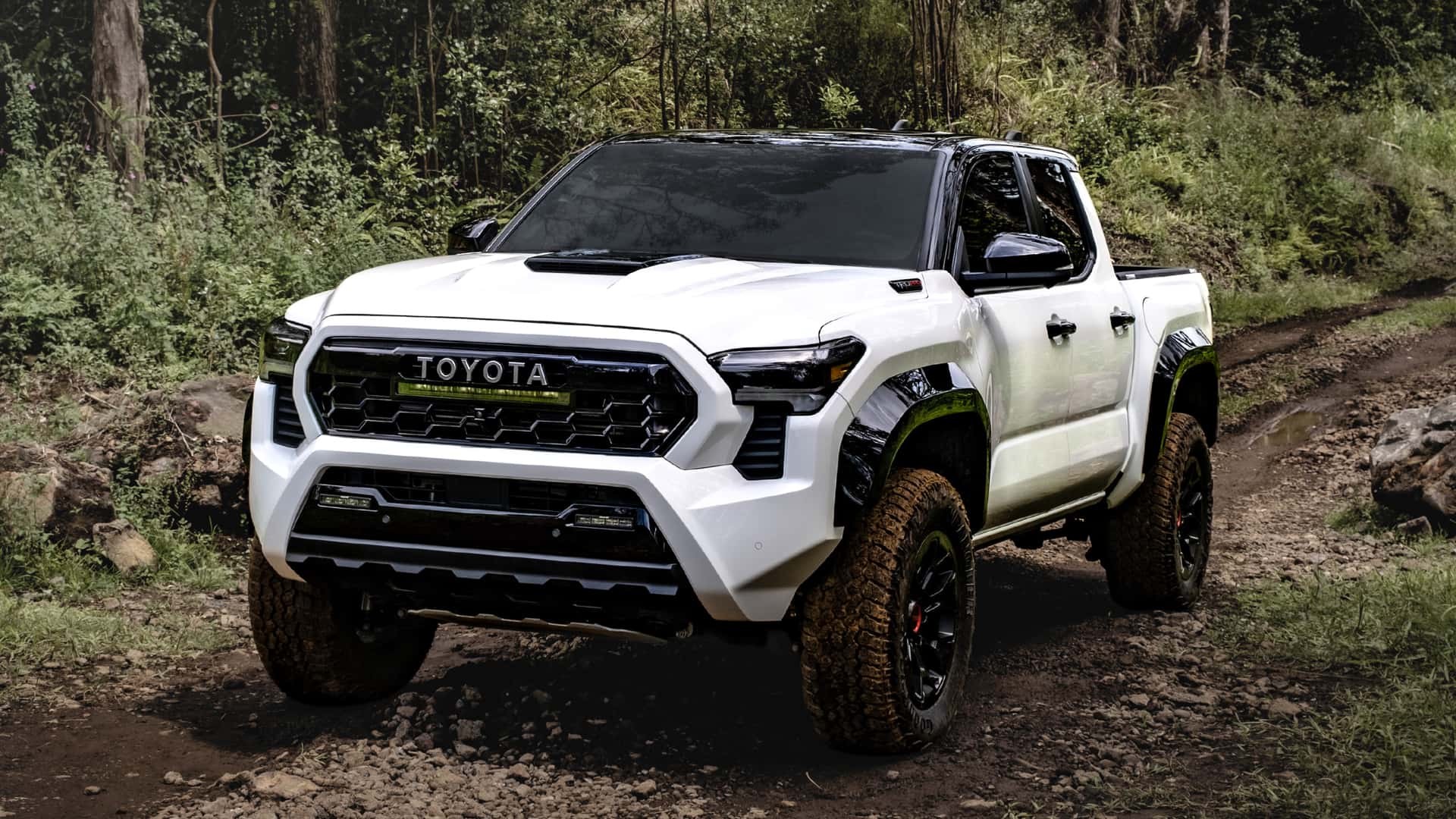
2. Toyota Tacoma (Leaf Spring Rear Suspension)
The Toyota Tacoma is legendary for its bulletproof reliability and rugged build quality, but if there’s one area where it undeniably lags behind the competition, it’s in ride comfort. The culprit? An old-school leaf spring rear suspension, a design that dates back to covered wagons.
While incredibly durable and ideal for heavy loads, leaf springs offer very little in the way of sophistication or compliance, especially when the truck bed is empty. This results in a ride that’s harsh, stiff, and prone to bucking over bumps like an untrained stallion.
For front-seat occupants, the ride is tolerable but firm. For rear-seat passengers, it can be borderline punishing. Hit a pothole or a rough patch of highway, and the entire rear of the vehicle jolts sharply, with vibrations and shudders shaking through the floorboards and into the seats.
The Tacoma’s suspension simply doesn’t absorb shocks—it transfers them. Even at moderate speeds, the ride is choppy and unrefined, making longer drives in this otherwise competent pickup tiring and uncomfortable. The sensation becomes even worse on corrugated or washboard roads, where the Tacoma begins to “hop,” lifting the rear wheels slightly off the surface at regular intervals.
Toyota has made small improvements over the years, and off-road-focused trims like the TRD Pro feature slightly better damping. However, these tweaks do little to solve the core problem of outdated rear suspension geometry.
Drivers seeking comfort may find themselves sorely disappointed by just how rough the Tacoma rides. Unless you’re constantly hauling tools or gear in the bed, the stiff, jittery rear end offers more punishment than purpose for the everyday user.
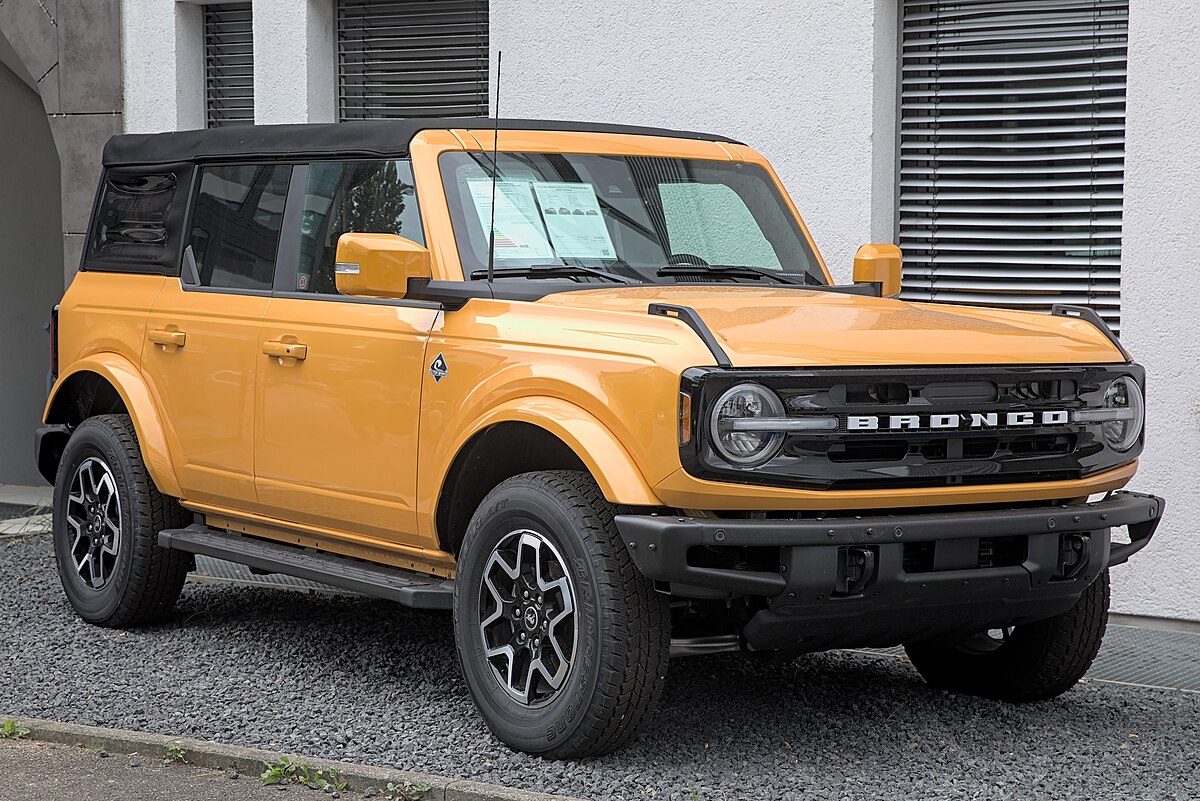
3. Ford Bronco (Sasquatch Package Suspension)
The Ford Bronco, especially when equipped with the Sasquatch Package, is unapologetically built for off-road performance, and it shows. With its Bilstein long-travel dampers, lifted ride height, and 35-inch mud-terrain tires, this version of the Bronco turns even the gnarliest trails into manageable playgrounds.
But take it out of the wilderness and onto paved city streets or highways, and you’ll quickly discover that comfort was never part of the suspension brief. The ride becomes jittery, jumpy, and occasionally chaotic, especially over broken pavement or uneven roads.
The combination of aggressive off-road suspension geometry and massive tires means the Bronco struggles to settle on smooth tarmac. Every little bump sends a noticeable ripple through the vehicle, and potholes can feel like small craters. The tall sidewalls and aggressive tread pattern of the tires don’t help either—they magnify noise, reduce on-road grip, and contribute to a squirmy, unsettled ride quality.
At higher speeds, the suspension doesn’t inspire confidence, as it allows too much vertical motion before damping kicks in. This leads to a sense of imprecision, especially on curvy roads where body lean and rebound are pronounced.
To be fair, not all Bronco models suffer equally. The base and mid-range trims with smaller wheels and less aggressive suspension tuning ride more like conventional SUVs. But if you opt for the Sasquatch package—and many do because of the looks and capability—you’re locking yourself into a suspension setup that’s built for Moab, not Main Street.
It’s a blast on dirt, but when you hit the daily grind of potholes, speed bumps, and cracked concrete, the Bronco delivers one of the least forgiving rides in the modern SUV segment.
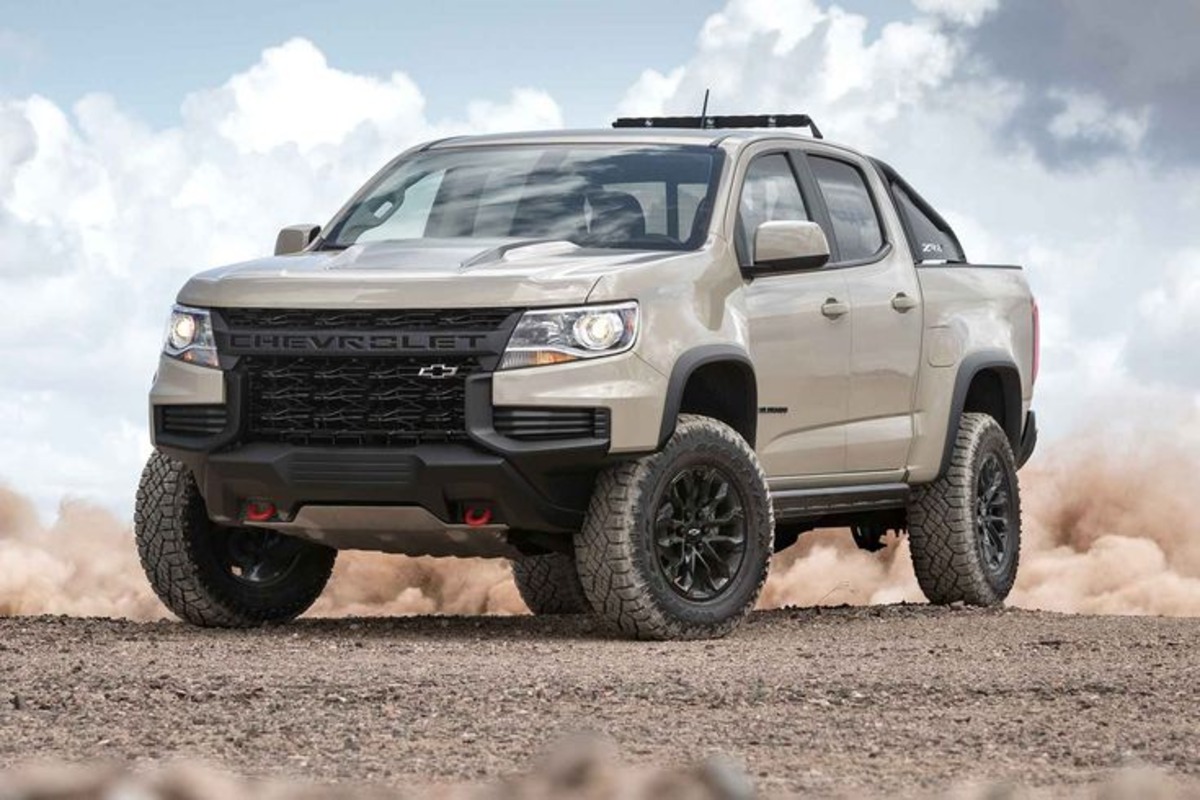
4. Chevrolet Colorado ZR2 (Multimatic DSSV Shocks)
The Chevrolet Colorado ZR2 is another off-road hero whose Multimatic DSSV shocks, while brilliant in extreme environments, translate into a punishing ride on everyday roads. These position-sensitive dampers are fantastic at high-speed desert running or rock-crawling, where their ability to resist fade and absorb huge impacts truly shines.
But in suburban or urban driving environments, the very stiffness that makes them great off-road becomes their Achilles’ heel. Over potholes, small bumps, or highway expansion joints, the Colorado ZR2 feels taut and unrelenting.
The stiff damping and short rebound stroke of the DSSV shocks don’t leave much room for finesse. The vehicle feels firm and tightly wound, never allowing the suspension to fully relax. Every road imperfection is communicated through the chassis in vivid detail—almost as if the truck is exaggerating the state of the pavement.
Long road trips can feel fatiguing, with constant vibrations and jolts working their way into the seat cushions and steering wheel. Even speed bumps become exaggerated events that require slow, deliberate handling to avoid jarring impacts.
There’s no denying that the ZR2 is a highly capable vehicle with credentials that put it in elite off-road territory. But that capability doesn’t come cheap—or comfortably.
It’s a truck for people who live for weekend excursions and are willing to endure a weekday compromise. If your daily routine includes grocery runs, school pickups, and lots of pavement, the ride quality will feel more like a workout than a luxury experience. It’s a specialist vehicle masquerading as a daily driver—and your spine won’t let you forget it.
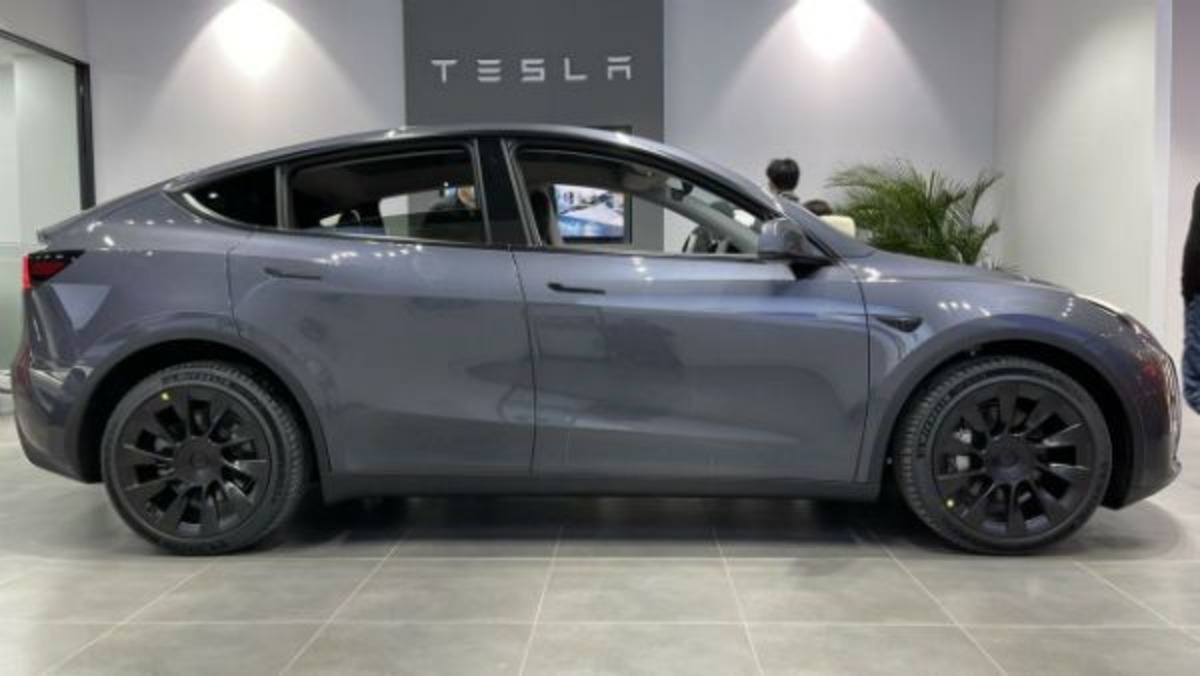
5. Tesla Model Y (Early Production Suspension Tuning)
The Tesla Model Y, particularly in its early production versions, was met with sharp criticism for its overly stiff suspension tuning, especially for a vehicle that markets itself as a premium family crossover.
Unlike traditional luxury cars that incorporate adaptive dampers, air suspension, or more pliable spring setups, early Model Ys featured a fixed-rate suspension that prioritized control and efficiency over comfort. The result? A ride that feels jarring, brittle, and sometimes downright punishing on anything but the smoothest roads.
The problem becomes especially noticeable on urban streets where cracked asphalt, small potholes, and road seams are common. The Model Y transmits most of these impacts directly into the cabin with minimal damping, causing rattles, shudders, and a harsh ride quality that belies its high-tech image.
Things worsen when the car is equipped with the optional 20- or 21-inch wheels, which reduce sidewall cushioning and add a sharp, almost metallic edge to every bump. Rear-seat passengers, in particular, often report a constant choppiness that feels out of step with the vehicle’s premium aspirations.
Tesla has made incremental improvements over time, refining bushings and tweaking spring rates in later builds. Still, early Model Ys lack the sophistication found in competitors from BMW, Audi, or Mercedes-Benz, whose suspensions offer a far more composed and relaxed ride.
The fact that a modern electric vehicle—one known for its quiet powertrain—feels so unforgiving over rough pavement creates a noticeable contradiction. For prospective buyers, it’s a reminder that high performance and futuristic tech don’t always equal comfort, especially when suspension tuning takes a backseat to acceleration and range.
ALSO READ: 10 Cars With Power Liftgates That Open Too Slowly
Suspension systems are more than just mechanical linkages and dampers—they’re the unseen sculptors of every driving experience. Whether you’re cruising in a flagship luxury sedan or bouncing along in a trail-tuned off-roader, your connection to the road and to the vehicle itself is filtered through the suspension.
As we’ve seen, the choices that automakers make in suspension design and tuning have profound consequences—not just on comfort, but on how a vehicle behaves, feels, and communicates with its occupants. Some suspensions are engineered with such finesse and sophistication that even the worst roads feel like freshly paved highways. Others, however, are built with singular purposes in mind—like trail crawling or hauling heavy loads—and sacrifice day-to-day comfort to fulfill those specific demands.
Vehicles like the Mercedes-Benz S-Class, Rolls-Royce Ghost, and Range Rover represent the pinnacle of what’s possible when ride quality is given top priority. These machines float, glide, and cushion their passengers with an elegance that borders on surreal.
Their suspensions work tirelessly in the background—adjusting in milliseconds, analyzing the road ahead, and calibrating damping to perfection—all in service of occupant serenity. Riding in them is not just transportation; it’s a sensory experience designed to reduce stress and isolate you from the chaos outside. These vehicles remind us that engineering can transcend function to deliver comfort that verges on artistry.
On the other hand, vehicles like the Jeep Wrangler, Ford Bronco Sasquatch, and Chevrolet Colorado ZR2 embody a different philosophy. Their suspensions are tuned to take abuse, to remain durable under stress, and to perform in environments where smooth pavement is a rarity. In these cases, the spine-jarring ride isn’t a flaw—it’s a consequence of optimization for extreme terrain.
The challenge is that these vehicles are often used in urban or suburban settings where their suspension’s roughness becomes all too apparent. They’re brilliant tools for specific tasks, but for everyday comfort, they fall noticeably short. Meanwhile, vehicles like the early Tesla Model Y highlight how even modern, high-tech EVs can miss the mark when ride refinement isn’t prioritized in the tuning process.
Ultimately, comfort is subjective, and every suspension system represents a series of compromises. Some drivers prefer a taut, communicative ride that enhances their sense of control and connection with the road. Others want total isolation, a bubble of silence and smoothness in a hectic world.
The best suspension for you depends on how you drive, where you drive, and what you expect from your vehicle. However, understanding how suspension systems function—and where different vehicles fall on the comfort-versus-capability spectrum—can help you make smarter choices and appreciate the trade-offs that engineers face with each design.
Whether you value the pillowy grace of air springs or the rugged confidence of off-road shocks, suspension is the unsung hero—or silent antagonist of every drive. Recognizing the difference between systems that pamper and those that punish makes you a more informed driver, and ultimately, a more satisfied one.
